By Ardyth Harris Gillespie
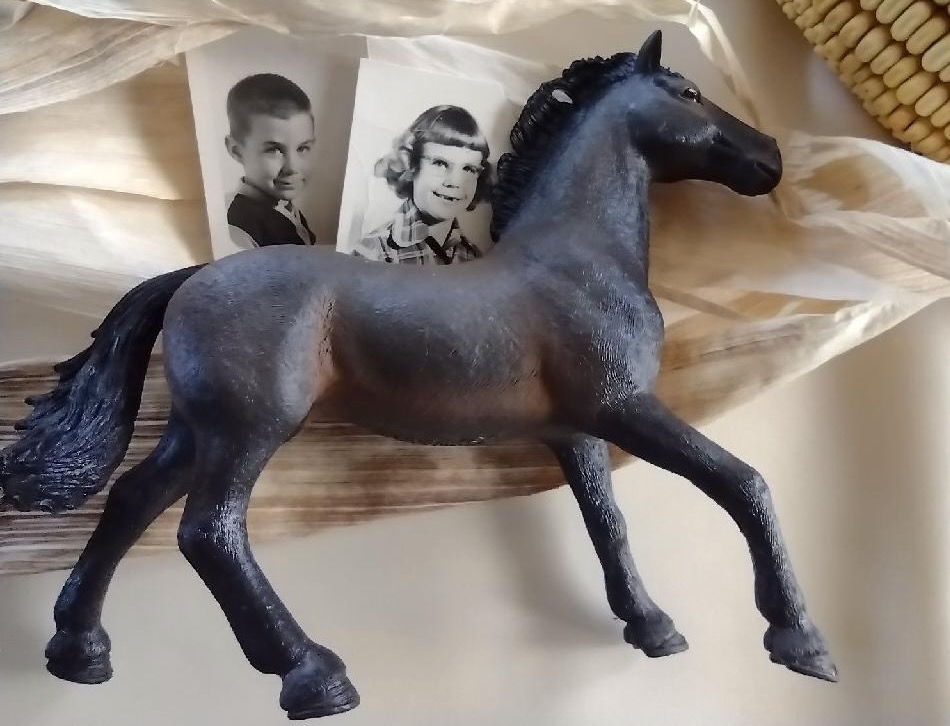
Our horse Bonnie lurched into an unexpected and uncontrollable gallop. Instinctively, I grasped the rough mane with both hands and dropped the bridle strap. My white-knuckled hands were able to hold on for a few minutes, my younger brother Bill behind me, his hands clinging to my waist. As I slid off, Bonnie, part workhorse and part saddle horse, was barebacked except for a gunny sack over her broad back. We bounced with our legs too short to grip her deep brown sides. The dust billowed up from the dirt road, burning my eyes. We were riding Bonnie home from our country school for the first time – the second week of my second grade.
We slid off with a crash onto the edge of Buck Creek Road and rolled into the ditch, weedy and dusty, but missed the empty metal culvert protruding from the road. No water was coming out of the culvert, but the shallow ditch was damp enough to cushion our landing.
The disadvantage of no saddle horn or stirrups was that nothing could help us hold on. The advantage was that we slipped unencumbered safely to the edge of the road. I looked to see that Bill was okay. He was slowly getting to his feet and looking for me.
“Are you ok?” I asked.
He replied, “I think so, are you?”
We got to our feet in time to see Bonnie disappear over the hill in a cloud of dust, still galloping down the dirt road under a blue sky with puffy white clouds. Bonnie had no consideration for what had happened to us. We dusted the dirt and weeds off our brown Sears and Roebuck jeans. Our six- and seven-year-old bodies weren’t harmed. We were a bit shaken, mostly by Bonnie’s behavior. We found our green-and- white-striped homemade cloth lunch bag back up the road where it had fallen.
We had walked about a half mile when we saw Mom coming up the road in the family’s army green Chevy, purchased with a rationing allowance following World War II. When Bonnie arrived home without us, Mom had hopped into the car to see what had become of us. We were happy to see her. 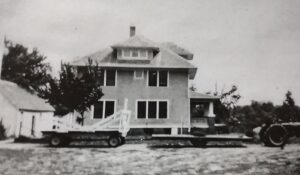
“Are you hurt?” she asked. We told her no. She said, “I’m so happy to see you unharmed,” as she hugged us both.
Riding home, we shared our adventure with Mom. We had ridden to school that morning, unaware that Bonnie could go faster than a slow, bumpy trot. The ride to school had been uneventful with Bonnie at her usual sure-footed pace, plod…plod…plod. We were excited to finally ride our docile horse to the one-room country school, Pymosa #4 .
When the school day was over, we had climbed onto the wooden fence and, with our teacher Mrs. Smith’s help, mounted Bonnie for the ride home, unaware of the coming adventure.
Mom knew we had ridden our child-friendly horse many times on the farm with only minor difficulties. The biggest drama on the farm was when we jumped off Bonnie to take cover behind a row of corn while playing cowboys with our cap guns, like we’d seen on TV. Our guns startled her, and she ran away.
“But, Mom, why did Bonnie suddenly run so fast?” I asked.
Mom replied, “Well, she was headed home, and horses like to be home. If we had known that she could run that fast, we would have at least warned you to keep the reins held tightly, or, with a concerned smile, “Perhaps it wasn’t a good idea to let you ride to school until you were a little bigger.”
“Oh, but we want to ride her to school again,” we said, almost in unison.
I said, “I won’t be surprised next time, and I think I can hold her. If we had a saddle…”
Mom interrupted my thought, “If you had a saddle, you could have been caught in a stirrup and dragged down the road.”
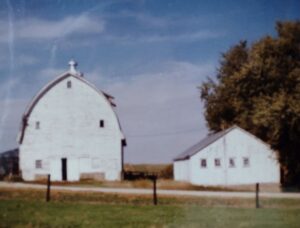 Mrs. Smith, my second and third-grade teacher, shared my parents’ open-ended approach to learning. She took us on field trips into the nearby woods to harvest hickory nuts or to play in the shallow creek with tiny fish. Imagine no bus, no parental permission forms, no preplanning needed. If it was a sunny day, we took advantage of the time to learn about nature and life. Seven decades later, I recognize that by “putting the reins in our hands,” we were becoming independent learners.
Mrs. Smith, my second and third-grade teacher, shared my parents’ open-ended approach to learning. She took us on field trips into the nearby woods to harvest hickory nuts or to play in the shallow creek with tiny fish. Imagine no bus, no parental permission forms, no preplanning needed. If it was a sunny day, we took advantage of the time to learn about nature and life. Seven decades later, I recognize that by “putting the reins in our hands,” we were becoming independent learners.
“Why did you color the sky below the barn?” My kindergarten teacher, Miss Harris, asked. I answered, “The cows need sky too.” I was surprised that she didn’t seem to understand that the sky below the barn was for the cows in the foreground. Such innocent logic wasn’t part of her teacher education. She did not try to dissuade me. I respected Miss Harris, a striking young first-year teacher. We were both on a sharp learning curve as we figured out how to best interact. She was rather strict, which was necessary with the older boys, but intimidated me, a shy kindergartner striving to please.
Other school learning expanded my problem-solving perspective.
On a chilly late fall day on our way to school, we rode Bonnie out of our farmhouse yard, over the cattle crossing (Bonnie’s hooves were much bigger than the cattle so we were able to cross) and into the neighbor’s pasture. We crossed the pasture through the wide path cut deep into the ground from years of travel. Brownish-green fall grass flanked both sides. Passing close to the big oak tree, shade for the cattle, we rode down the quarter-mile-long lane at the end of the pasture bound by maturing cornfields. I turned Bonnie east onto the crossroad (now Dayton), past the Jones family’s house to Buck Creek Road, a half mile south of the school. It was there we noticed the missing lunch.
“We should go back and see if we can find it. I’m getting hungry already,” Bill said.
I replied, “We’d better not or we’ll be late for school.” Since I held the reins, I got my way.
When we arrived at school, we told Mrs. Smith that we had lost our lunch bag. She picked up the party line phone, the operator answered, and Mrs. Smith asked for my mother. The operator rang two short rings (our ring) and my mother answered. Others on our side of the party line could have picked up, but the custom was to answer only your own ring and not eavesdrop on neighbors. Mom interrupted her laundry in the two-tub washer in the basement, drove our army green 1950s Chevy, following our path, and discovered our lunch hanging from the oak tree branch we had passed.
Another time, walking through the woods on a cold school day, we caught minnows from the nearby creek and brought them into the schoolhouse in a bucket or something we found along the way. Or maybe it was a lunch pail. We didn’t have a fishbowl, so we put water in our stand-up sandbox for the fish. We arrived the next morning to find the fish frozen in the sandbox. The teacher had started the fire in the wood stove and the school warmed up, and so did the fish.
To our delight, the fish started swimming around.
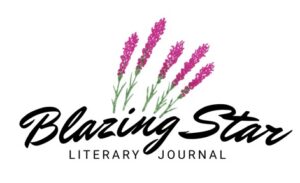 Photographs courtesy of Ardyth Harris Gillespie
Photographs courtesy of Ardyth Harris Gillespie
Copyright © 2023 by Ardyth Harris Gillespie
Ardyth Harris Gillespie
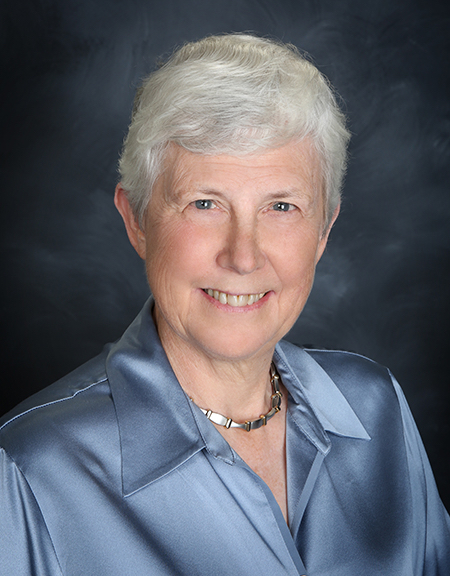
Full circle
Ardyth Harris Gillespie has come full circle back to her family’s southwest Iowa farm. Her education journey started in a one-room country school in Pymosa Township, Cass County, and took her through a doctorate from Iowa State University, a career at Cornell University in Ithaca, New York, and now, with her husband, raising fruits, vegetables and lambs on her family farm.